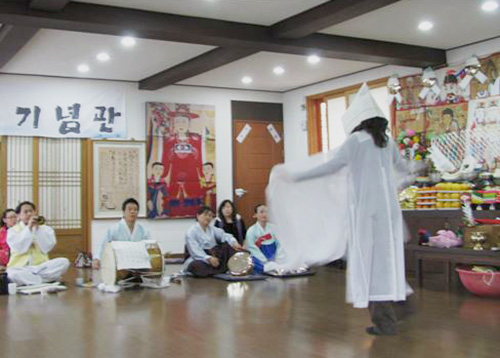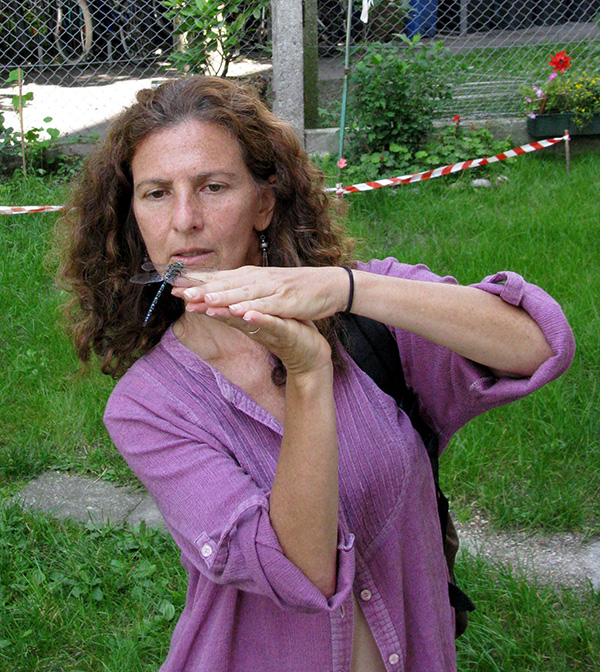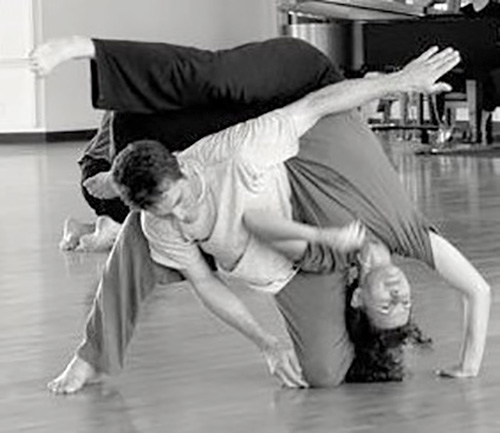Writing the Dance
An Interview with Cheryl Pallant
BY EMMALY WIEDERHOLT
Cheryl Pallant is a dancer, writer and professor in Richmond, Virginia. She has published several books of poetry and nonfiction, as well as many articles. She discusses the convergence of dancing and writing in her life, and how one feeds the other.
~~
What is your background in dance?
Right before entering high school, a doctor discovered I had scoliosis. Part of the recommendation for maintaining my health was to remove myself from all physical activities, which meant no gym or dance. The doctor thought it would be a way of keeping me from further complications. He also said I might need to wear a brace. This was the last thing I wanted as a teenager in high school. I chose instead to wear an invisible brace and kept my torso rigid and erect, thinking it would guard me against having to wear the real thing.
In college, I saw a creative movement class and, even though it was prohibited, curiosity got the best of me and I took the class. It was life changing. My pain level dropped and my perceptions shifted as I grew in tune with my senses, my body and the world. I became devoted to dance.
One of the forms of dance that I was introduced to early on was contact improvisation. This unchoreographed, improvisational form appealed to me because I could move any way I wanted without restriction. I enjoyed its freedom and the effect of compression on my body. I ended up leading jams locally and nationally, participating in festivals in Europe, and teaching the dance, which I still do to this day.
What is your current dance practice?
I teach contact improvisation at a university, as well as “Writing from the Body,” a class that combines writing with movement. I dance Argentine tango regularly and practice Authentic Movement every now and then. I perform occasionally, usually as part of a ceremony.
Through contact improvisation, I developed a heightened sensitivity to the impact of touch, which led me to becoming a Reiki and Healing Touch practitioner. I apply what I’ve learned from contact improvisation to working hands-on with people. Healing relies on deep listening and awareness of subtle motion. I also apply it to distant healing. Whether I’m doing the practice in person or at a distance, I engage in what feels like a dance of energy.
I would also say when I’m walking or biking that I’m dancing as well.
What is your background in writing?
I started publishing in college. I have several books of poetry. My poetry is very much influenced by my dance practice. It’s a kinetically inspired poetry. I’ve also written a book on contact improvisation, which was my attempt to articulate my practice and make a gift to the community.
I just released a book about my time living in Korea. The book, Ginseng Tango, has a fair amount of dance in it. Among other themes, it covers Korean dance, shamanism, contact improvisation and tango. Korea was where I was introduced to tango.
 Cheryl Pallant dancing in shaman ceremony in South Korea
Cheryl Pallant dancing in shaman ceremony in South Korea
I have another book coming out next year, called Writing and the Body in Motion: Awakening Voice through Somatic Practice, which is based on my “Writing from the Body” classes and workshops. It’s very much a marriage between writing, movement, body awareness and healing. I’ve been teaching this material as a semester-long class, as well as through workshops around the country.
I cannot separate writing from dancing. They inform each other. Similarly, I’ve practiced meditation since I was 16, and I cannot separate meditation from anything I do.
How has writing influenced your understanding of dance, and vice versa?
On any given day, I may write for 30 minutes, get up and move around for five minutes, and return to writing. My experience shows that keeping my body supple keeps my mind supple. It keeps me lubricated mentally, physically, energetically and spiritually. I tap into all areas of my brain.
I find that both writing and movement provide portals of insight into my life. The more I explore myself, the more I tap into a universal energy that helps me understand other people. It’s heightened my perception on many levels.
Both writing and dance are languages. A person can express through movement, which most dancers do; they answer questions, tell stories or explore ideas through movement. I’m able to do that, but I also like the articulation of words. I find that the articulation of words leads to greater articulation of movement, and greater articulation of movement leads to greater articulation of words. When I’m teaching my “Writing from the Body” workshop, this is exactly what we do. We’re using one to further the other for creative purposes, insight or healing.
How do you experience the difference between writing about dance from a creative/poetic standpoint versus from an informational/journalistic standpoint?
My poetry is probably most closely aligned with my experience of dance and body awareness. I am relying on my experience of presence; “What does it mean to be present in one’s body?” is my ongoing question. The poems are words representing and responding to pulse and breath. Both poetry and dance are incredibly liberating in that they put me in an expansive, fluid consciousness that other forms of expression don’t replicate.
When I’m writing about dance for a newspaper, which I did for 12 years, it was much more structured, informational, and often formulaic. It was a different experience entirely. My journalistic writing was a gift to the local dance community but, for me, didn’t address my own power of creativity, spirituality, presence and being. My nonfiction books – the one on contact improvisation and the upcoming one on somatics – refer to these experiences, but there’s a significant difference between writing about something and having the writing be itself a representation of the idea.
I also write fiction. In that form, I tap into a creative pulse. This often is translated through image or myth.
I think it’s a misconception that writing is a purely mental experience. When you bring in the whole body, you rely on more resources. You rely on breath, gesture, fleeting thoughts and impressions… anything that captures your attention.
What advice or encouragement would you give to a dancer who is interested in writing?
I always tell my dance students that a prerequisite for dance is having a body. Then start moving. Explore. I would say a similar thing to someone interested in writing: Do you have a computer or pen and paper? Start putting words down and make it a regular practice. Explore. With both writing and dancing, the more time you devote to the practice, the more comfortable you become. You develop not only familiarity, but greater curiosity as well. You become better able to maneuver the terrain. It all starts from just making it a practice. Practice means exploring, not being perfect. Most of us get hung up on wanting our work to be perfect. Just start playing, letting it be an avenue of expression. Find out what it means to be in your flow. And when you’re ready, take a class and learn different forms and ways to structure your material.
It’s also important to know what you’re hoping to achieve. Is the practice only for you, is it for your friends and family, or do you want a bigger audience? Depending on how you answer that question will affect how you move forward.
Any other thoughts?
Of course, I’m biased as a dancer, but I believe it would be better if we all connected with our bodies. Listening deeply and getting to know the wisdom, expression, wholeness and interconnectivity of our flesh is always important, but it is more so right now. Connecting with our bodies not only means doing so with each other but also connecting with the earth. Too many of us are disconnected from our bodies and from the body of the earth, which contributes to many current problems. The more we can establish a respectful relationship with our bodies, the better off we can be.
~~



6 Responses to “Writing the Dance”
Thanks for everyone’s comments.
Eveylyn, I might turn your attention to my book Contact Improvision: an Introduction to a Vitalizing Dance Form. You’ll get a good overview of contact improvisation. I wanted the essence of the dance to come across in the way I wrote it, so it’s not only an informative read but a lyrical one.
Lorien, You can do both. Do not let either go. They contribute to your aliveness.
Lenore, A limit is to be challenged and respected. We often don’t know what our limits are until we test them. Each time I test one of mine, the limit moves. Too many limits are set by our thoughts, not our somatic experience.
Dance & write on!
Thanks for reading Lorien! Yes, there are so many ways for dance to be in a person’s life. I hope you’ve found new ways to have dance exist in your life that feel rewarding and nourishing!
Thanks for this article! I’m a former dancer, turned lawyer and writer. Unfortunately, when I quit dance, I thought I had to somehow “get rid” of that part of me. I know, I know, not so bright. Guess what? The dancer didn’t die. It never occurred to me I could do both. This is so inspiring!
Hi Evelyn, Thanks for reading and glad you are able to find new connections between your passions! Here’s a link to learn more about contact improvisation: http://www.contactimprov.com/whatiscontactimprov.html
I am also a writer and dancer (ballet, jazz, lyrical) but never saw any connection between the two other than creativity, so this interview is quite interesting . I also haven’t heard of contact improvisation. How can I learn more?
Enjoyed the interview. I liked the integration of movement to writing. Impressive that someone diagnosed with scoliosis can now move the way you do. I’m sure it will inspire others who have been told they are limited!
Congratulations!
Comments are closed.